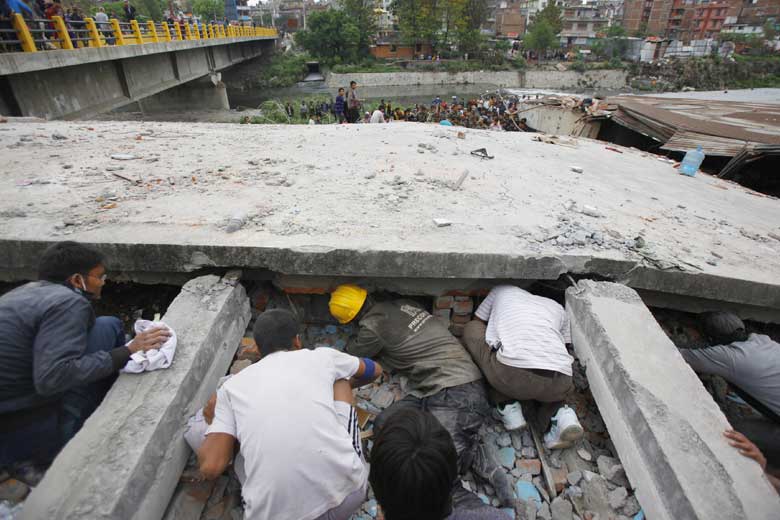The death toll till Monday is 3,700. This figure is only for areas that are within contact. Remote areas which are out of reach for rescue operations are not accounted for.
The injured so far is about 6500. Due to fear people have been living outside their homes in open areas where possible. Due to rain last night people were found sleeping in their cars also.
People living in high altitudes of the mountain areas are totally devastated with difficulties to cope with disasters.The government authorities in these areas have relayed desperate need of help.
Rescue operations and medical services have been so outstretched that it is almost reaching breaking point. Messages for rescue operations have been coming from all over Nepal with teams not knowing where and which to attend.
Unicef said that nearly one million children have been “severely affected” by the disaster and warned of an increased risk of waterborne and infectious diseases.
“What we know that at this point is there are nearly a million children who are severely affected. Our biggest concern for them right now is going to be access to clean water and sanitation, we know that water and food is running out,” Unicef’s Christopher Tidey said.
Hospital beds in the capital, Kathmandu, are already full, forcing other sick and injured people to seek makeshift treatment in the street alongside thousands of displaced survivors whose homes were destroyed or are in imminent danger of collapse after being weakened by the M7.8 quake.
On Mount Everest, the evacuation began on Monday of hundreds of climbers trapped after a huge avalanche flattened the base camp, killing 17 and injuring 61 in the worst disaster to hit the mountain. The death toll on the mountain is likely to rise as no one knows how many people were at base camp and in the vicinity.
Many of the dead are locals, making this the second year running that the sherpa and other communities have been hit hard on Everest. Only one of the major expeditions has its camp intact and it seems very unlikely anyone will be continuing any climb on the peak.
While survivors wait for aid, rescue teams are continuing the frantic search for survivors, despite being exhausted by two nights of ceaseless work.
Rescuers used their bare hands, with no protective gear or heat detectors, in their optimistic search for survivors in remains of the Dharahara tower.
The narrow alleys would stop cranes, earthmovers or diggers reaching most of the houses that have collapsed, even if the aftershocks hadn’t scared workers out of even trying, said Shyam Adhikari, the local police chief.
With so many people sleeping in the open with no power or water and downpours forecast, there were mounting fears of major food and water shortages.
“There is no electricity, no water. Our main challenge and priority is to restore electricity and water,” Dhakal at the home ministry said. “The next big challenge is the supply of food. Shopkeepers are unable to go in and open their shops. So people are facing difficulty buying food.”








